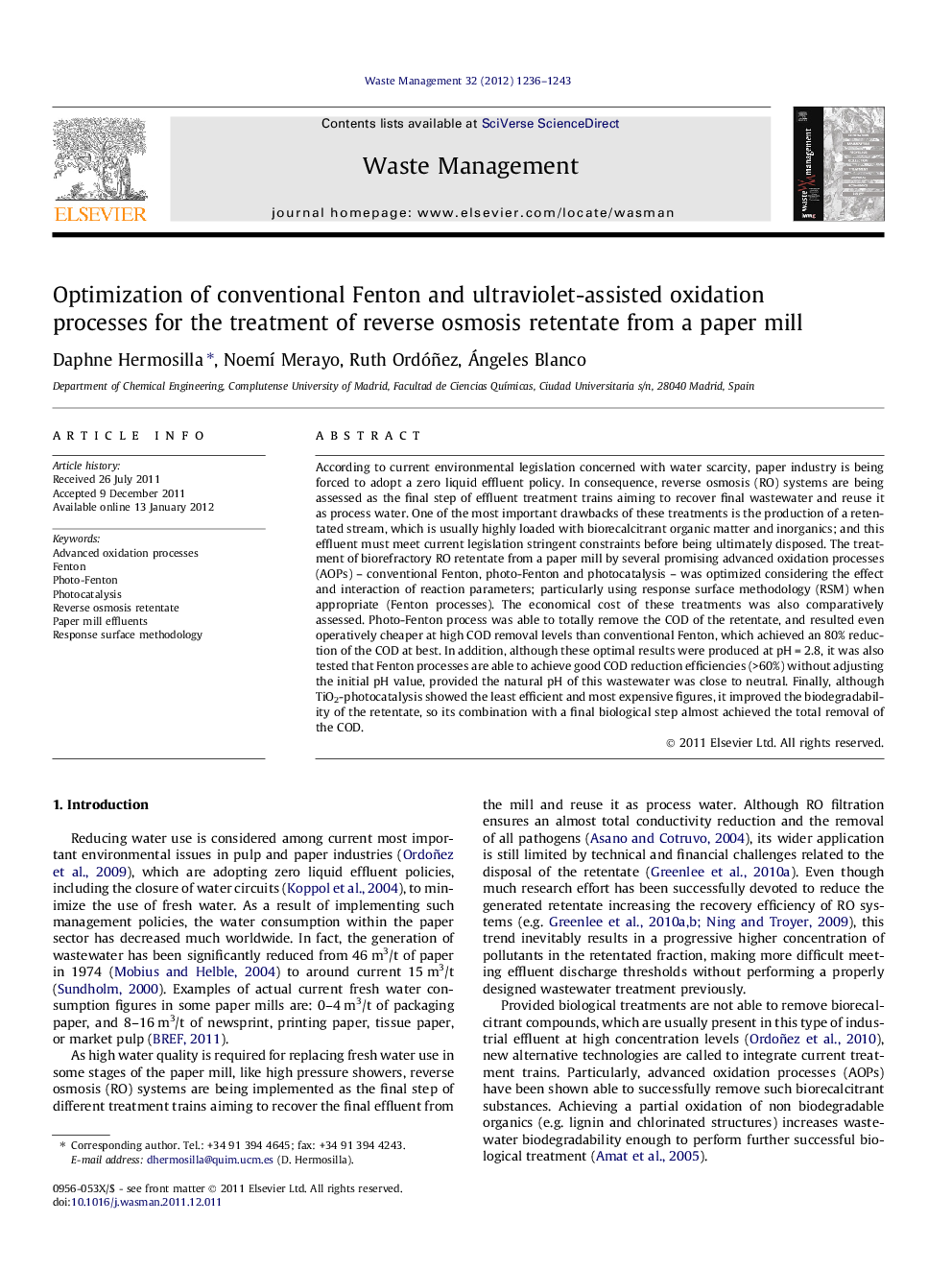| کد مقاله | کد نشریه | سال انتشار | مقاله انگلیسی | نسخه تمام متن |
|---|---|---|---|---|
| 4471813 | 1315044 | 2012 | 8 صفحه PDF | دانلود رایگان |

According to current environmental legislation concerned with water scarcity, paper industry is being forced to adopt a zero liquid effluent policy. In consequence, reverse osmosis (RO) systems are being assessed as the final step of effluent treatment trains aiming to recover final wastewater and reuse it as process water. One of the most important drawbacks of these treatments is the production of a retentated stream, which is usually highly loaded with biorecalcitrant organic matter and inorganics; and this effluent must meet current legislation stringent constraints before being ultimately disposed. The treatment of biorefractory RO retentate from a paper mill by several promising advanced oxidation processes (AOPs) – conventional Fenton, photo-Fenton and photocatalysis – was optimized considering the effect and interaction of reaction parameters; particularly using response surface methodology (RSM) when appropriate (Fenton processes). The economical cost of these treatments was also comparatively assessed. Photo-Fenton process was able to totally remove the COD of the retentate, and resulted even operatively cheaper at high COD removal levels than conventional Fenton, which achieved an 80% reduction of the COD at best. In addition, although these optimal results were produced at pH = 2.8, it was also tested that Fenton processes are able to achieve good COD reduction efficiencies (>60%) without adjusting the initial pH value, provided the natural pH of this wastewater was close to neutral. Finally, although TiO2-photocatalysis showed the least efficient and most expensive figures, it improved the biodegradability of the retentate, so its combination with a final biological step almost achieved the total removal of the COD.
► RO-retentate from a paper mill was successfully treated by several AOPs.
► AOPs application was optimized by response surface methodology.
► Photo-Fenton process resulted the most effective and cheapest treatment.
► More than 60% COD removal may be achieved without adjusting the initial pH of the solution when applying Fenton treatment.
► A COD removal >60% may be achieved by Fenton’s process without adjusting the pH.
► Photocatalysis at least increased the biodegradability of the retentate.
Journal: Waste Management - Volume 32, Issue 6, June 2012, Pages 1236–1243